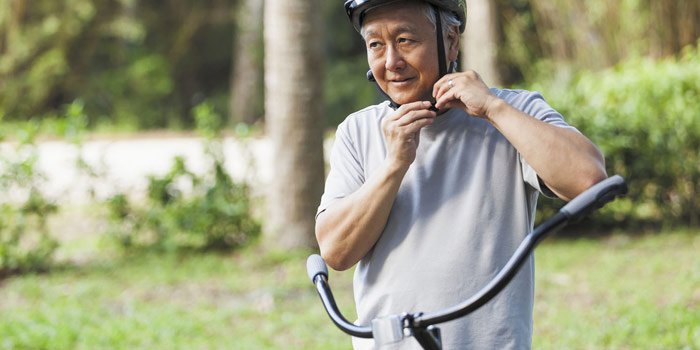No products in the cart.
Uncategorized
Get Moving: Physical Activity for Older Adults
Australians currently have one of the highest life expectancies in the world. Today, Australian men are living until they are nearly 80 years old, and women are living to 84 years. For both genders, this is up 25 years from a century ago. As the population is ageing, the physical health of older Australians is also improving with most older Australians (82%) having a positive attitude about their quality of life. The majority of older Australians are now managing to live independently at home for longer than ever before and they are taking on more and more activities as they have more free time on their hands.
In order to maintain our lifestyle as we age, it’s important to be physically active and limit sedentary behaviour. By ensuring we look after ourselves, we are creating more opportunities to have fun, feel good, and enjoy life as we age.
Why Is Physical Activity Important For Older Adults?
The following are some of the key benefits for older adults engaging in physical activity:
- control weight, blood pressure, cholesterol and diabetes as well as bone and joint problems such as arthritis
- reduce the risk of heart disease and stroke
- manage pains of ageing
- maintain and increase joint movement
- reduce the risk of injury from falls
The amount of physical activity to do each week in order to maintain health and fitness depends on your age and level of health. In order to stay healthy, or to improve health, older adults should do both aerobic and muscle-strengthening activity each week. If we can keep physically active, we not only feel better physically but also emotionally.
How Much Physical Activity is Needed?
Any activity, however light, is better for your health and wellbeing than not doing anything. As such, it’s important for everyone to try to get moving no matter what age or weight we are or what health problems we have.
It is recommended that adults over the age of 65 with no health conditions that limit mobility do 30 minutes of moderate-intensity activities each day, or as many days as possible. Moderate-intensity activity simply means that you are working hard enough that your heart rate will rise and you break a sweat.
What Aerobic Activities Can We Do To Keep Moving?
As mentioned above, we should aim to do both aerobic and muscle-strengthening activity. The following are some recommended aerobic activities that you can incorporate into your daily schedule:
- a fast-paced walk
- a water aerobics class
- a dance class, like ballroom dancing or line dancing
- riding a bike across the flat ground or with a few hills
- playing doubles tennis
- canoeing or kayaking
- mowing the lawn or gardening
- taking part in an Ageless Grace® class
Unfortunately, regular daily activities like doing the grocery shopping, cooking or doing housework don’t count towards the 30 minutes of moderate-intensity activity that you are aiming for each day. While these activities do require a bit of effort, they are unlikely to increase your heart rate or make you break into a sweat.
Try to mix it up a bit and do a range of different physical activities that incorporate fitness, strength and balance as well as flexibility.
What Muscle-Strengthening Activities Are Good for Over 65s?
Muscle-strengthening exercises differ from aerobic activities in that they are counted in repetitions and sets. A repetition is simply 1 complete movement of an activity, for example, lifting a weight or doing a press up. A set is a group of repetitions. For muscle-strengthening, you should aim for 8 to 12 repetitions in each set and try to do 2 or 3 sets. To get the most out of muscle-strengthening activities, they should be done to a point where it would be difficult for you to do 1 more full repetition.
Going to the gym is a great place to do a workout with weights, but there are also exercises that you can do at home to strengthen your muscles, such as:
- moving heavy loads like boxes or groceries
- aerobic activities that involve stepping and jumping
- heavy gardening, like digging or shovelling
- push-ups, sit-ups and other exercises that use bodyweight for resistance
- taking a yoga class
- lifting moderate to heavy weights
If you can make a time to do muscle-strengthening exercises 2 or 3 times a week, even just incorporating them into everyday activities, you’ll start noticing the difference.
At Brain Sparks, we understand the importance of keeping moving and keeping fit as we age. The Ageless Grace® class is a great way to get moving. Using all five areas of the brain and combined with simple, organic movement, you can improve brain health through a combination of fun, playful exercises. Get in touch with us for more information.


